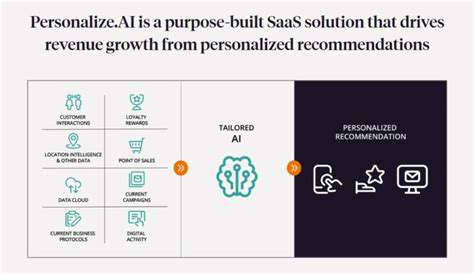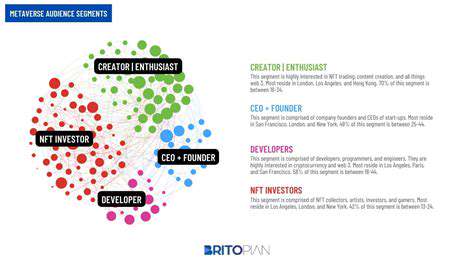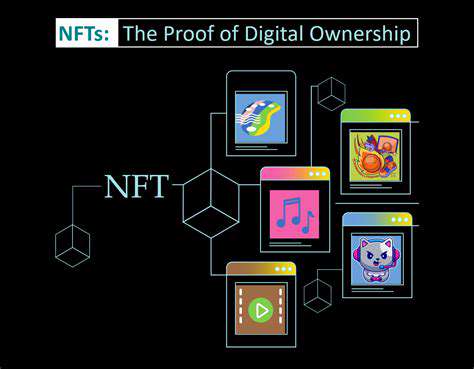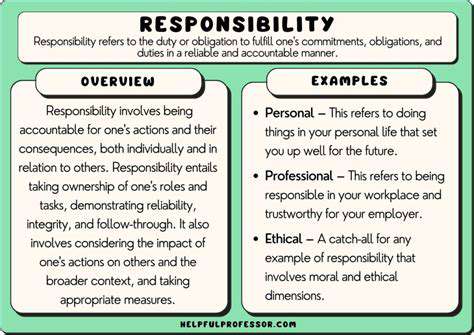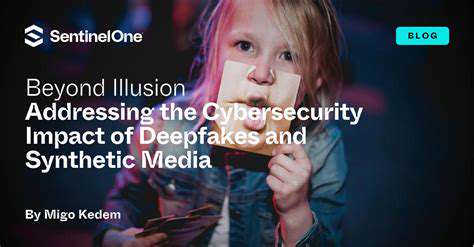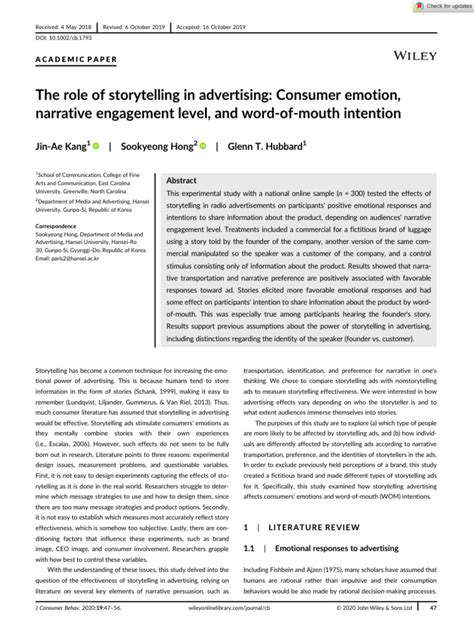Designing for Inclusivity and Belonging in Immersive Worlds
Cultural Sensitivity and Representation in Immersive Worlds
Understanding Cultural Nuances
Immersive worlds, with their potential to transport users to fantastical realms and diverse cultures, present a unique opportunity to promote understanding and appreciation of different traditions. However, the very nature of creating these virtual environments requires careful consideration of cultural sensitivities. Developers need to avoid perpetuating stereotypes or misrepresenting cultural practices. This involves extensive research and collaboration with individuals from various backgrounds to ensure accurate portrayals and avoid inadvertently causing offense or harm. A deep understanding of cultural nuances, including communication styles, social etiquette, and historical contexts, is crucial for crafting inclusive and respectful experiences.
Furthermore, it's essential to recognize that cultural norms are not static. They evolve over time, and different generations within a culture may hold varying perspectives. Failing to acknowledge this dynamic nature can lead to representations that are outdated or even offensive to certain segments of the population. Therefore, a robust approach to cultural sensitivity in immersive worlds requires ongoing engagement with diverse communities and a commitment to continuous learning and adaptation.
Ensuring Authentic Representation
Authentic representation is not just about avoiding harmful stereotypes; it's about showcasing the richness and diversity of human experience. Immersive worlds should feature a multitude of perspectives, stories, and characters that reflect the true tapestry of cultures across the globe. This includes not only the visual aspects, such as clothing and architecture, but also the ways in which characters interact, communicate, and navigate their virtual environments.
Developers should strive to create believable and nuanced characters who are rooted in specific cultural contexts. This involves acknowledging and incorporating the complexities of human behavior and motivations, avoiding simplistic portrayals, and ensuring that characters are not reduced to mere representations of their cultural background. Giving characters agency and allowing them to express their individuality within their cultural frameworks is a key component of authentic representation.
By embracing cultural sensitivity and ensuring authentic representation, developers can create immersive worlds that foster understanding, empathy, and respect. These worlds can serve as powerful tools for education and cultural exchange, promoting a deeper appreciation for the rich diversity of human experiences.
Building a diverse team of developers and designers, with input from cultural advisors, is paramount to achieving these goals. This collaborative approach is essential to ensure that the development process reflects a nuanced understanding of various cultural contexts. Only through consistent effort and a commitment to inclusivity can immersive worlds truly become platforms for understanding and celebrating the human experience in all its multifaceted glory.
Creating a pet-friendly pool environment involves more than just tossing in a floatie. Proper pool fencing and secure gates are crucial to prevent accidental slips and falls. Consider a pool with shallow areas where your pet can easily enter and exit, and avoid deep, potentially hazardous areas. Adding non-slip surfaces around the pool edge can also minimize the risk of your furry friend slipping and injuring themselves.
Empowering Voice and Agency: Giving Users a Platform
Understanding User Needs
A key aspect of designing for inclusivity is a deep understanding of the diverse needs and perspectives of your users. This involves more than simply conducting surveys; it requires active listening, empathy, and a willingness to explore the unique challenges and opportunities faced by individuals from various backgrounds. By truly understanding the motivations, frustrations, and aspirations of your target audience, you can design products and services that empower them and create a sense of belonging.
Accessibility Considerations
Accessibility is paramount in empowering voice and agency. This extends beyond simply meeting WCAG guidelines. It's about designing interfaces that are usable and navigable for people with disabilities, including visual, auditory, motor, and cognitive impairments. This means providing alternative text for images, captions for videos, keyboard navigation options, and adjustable font sizes. These features ensure that everyone can participate and contribute, regardless of their abilities.
Promoting Diverse Representation
Reflecting diversity in your design is crucial for inclusivity. This involves showcasing a wide range of people in your imagery, including varying ethnicities, genders, abilities, and ages. A diverse representation fosters a sense of belonging and validation for users from all backgrounds. It also helps to create a more welcoming and inclusive environment for everyone.
Designing for Cultural Sensitivity
Cultural differences can significantly impact user experience. Therefore, it's vital to consider the cultural nuances and sensitivities when designing your product or service. This includes understanding local customs, traditions, and communication styles. Being mindful of these factors ensures that your design respects cultural norms and avoids unintended offense or misinterpretations.
Facilitating User Participation
Empowering users goes beyond simply providing a platform; it's about fostering active participation. This can be achieved by providing opportunities for feedback, suggestions, and collaboration. Designing features that allow for user-generated content, community forums, and feedback mechanisms can create a more interactive and engaging experience. This ensures that users feel heard and valued.
Leveraging Technology for Inclusivity
Technology plays a vital role in expanding access and creating inclusive experiences. Using tools and platforms that cater to diverse needs, such as language translation services, real-time captioning, and assistive technologies, can bridge communication gaps and empower users with different backgrounds and abilities. This demonstrates a commitment to accessibility and promotes greater participation.
Measuring and Iterating
Inclusivity is not a static concept; it's an ongoing process. You need to actively measure the effectiveness of your inclusive design efforts and gather feedback from users. Analyzing user data, conducting usability testing with diverse groups, and actively soliciting feedback will help identify areas for improvement and ensure that your design continues to evolve and adapt to meet the needs of your entire user base. By continually monitoring and iterating, you can refine your design for maximum inclusivity and impact.
Building a Culture of Respect and Empathy: Fostering Positive Interactions
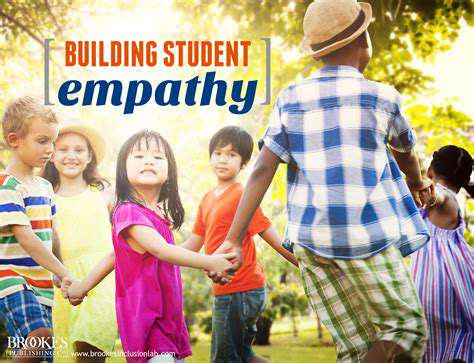
Fostering a Positive Environment
Creating a workplace where everyone feels valued and respected is crucial for productivity and overall well-being. A positive work environment cultivates innovation and collaboration, leading to greater success for the entire organization. Open communication and active listening are essential components in building this culture.
Implementing clear guidelines and expectations regarding respectful behavior is vital. This includes establishing policies that address harassment, discrimination, and bullying, and ensuring that these policies are consistently enforced. This proactive approach sets the stage for a more harmonious and productive work environment.
Establishing Clear Communication Channels
Effective communication is the cornerstone of any successful team or organization. Open and honest communication fosters trust and understanding, allowing for more efficient problem-solving and smoother workflow. This involves establishing clear and consistent communication channels, whether through email, instant messaging, or regular team meetings.
Regular feedback sessions, both formal and informal, are essential. This allows individuals to express their concerns, ideas, and suggestions, creating a culture of continuous improvement and promoting a more inclusive atmosphere.
Promoting Active Listening and Empathy
Active listening is more than just hearing what someone says; it's about truly understanding their perspective and feelings. This involves paying close attention to both verbal and nonverbal cues, and responding thoughtfully and empathetically. Showing genuine empathy and understanding for others' viewpoints fosters a sense of connection and strengthens relationships.
Encouraging employees to step into each other's shoes and consider different points of view is crucial in fostering a culture of understanding and respect. This mindset promotes inclusivity and helps to break down barriers that can hinder collaboration.
Recognizing and Rewarding Positive Behaviors
Acknowledging and rewarding positive behaviors reinforces the desired culture of respect. This can include verbal praise, written commendations, or small tokens of appreciation. Recognizing and rewarding positive behavior reinforces the importance of respect and sets a positive example for others to follow. Regularly acknowledging employees' contributions, both big and small, creates a sense of value and motivates them to continue demonstrating respectful behavior.
Celebrating team successes and individual achievements is another key element in fostering a culture of appreciation. These celebrations can be as simple as a team lunch or a company-wide recognition event. This recognition reinforces the desired behaviors and keeps the focus on positive contributions.
Encouraging Diversity and Inclusion
A diverse and inclusive workforce brings a variety of perspectives and experiences, which leads to more creative solutions and better decision-making. By actively promoting diversity and inclusion, organizations can create a more welcoming and supportive environment for all employees. This approach not only enriches the workplace but also reflects a commitment to social responsibility.
Providing opportunities for employees from diverse backgrounds to connect, learn, and grow together is paramount. This can be achieved through mentorship programs, employee resource groups, or diversity training initiatives.
Addressing Conflict Constructively
Conflict is inevitable in any workplace, but how it's handled significantly impacts the culture of respect. Establishing clear protocols for addressing conflicts fairly and respectfully is essential. It is important to create a safe space where individuals feel comfortable expressing their concerns and grievances without fear of retribution.
Facilitating constructive dialogue and mediation between parties involved in conflict is crucial in resolving disagreements effectively. This demonstrates a commitment to resolving issues collaboratively and preserving the respect and trust within the organization.
Read more about Designing for Inclusivity and Belonging in Immersive Worlds
Hot Recommendations
- Immersive Culinary Arts: Exploring Digital Flavors
- The Business of Fan Funded Projects in Entertainment
- Real Time AI Powered Dialogue Generation in Games
- Legal Challenges in User Generated Content Disclaimers
- Fan Fiction to Screenplays: User Driven Adaptation
- The Evolution of User Driven Media into Global Entertainment
- The Ethics of AI in Copyright Protection
- Building Immersive Narratives for Corporate Training
- The Impact of AI on Music Discovery Platforms
- AI for Audience Analytics and Personalized Content


